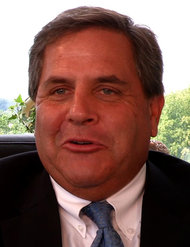In two precision operations that involved people in more than two dozen countries acting in close coordination and with surgical precision, thieves stole $45 million from thousands of A.T.M.’s in a matter of hours.
In New York City alone, the thieves responsible for A.T.M. withdrawals struck 2,904 machines over 10 hours starting on Feb. 19, withdrawing $2.4 million.
The operation included sophisticated computer experts operating in the shadowy world of Internet hacking, manipulating financial information with the stroke of a few keys, as well as common street criminals, who used that information to loot the automated teller machines.
The first to be caught was a street crew operating in New York, their pictures captured as, prosecutors said, they traveled the city withdrawing money and stuffing backpacks with cash.
On Thursday, federal prosecutors in Brooklyn unsealed an indictment charging eight men — including their suspected ringleader, who was found dead in the Dominican Republic last month. The indictment and criminal complaints in the case offer a glimpse into what the authorities said was one of the most sophisticated and effective cybercrime attacks ever uncovered.
It was, prosecutors said, one of the largest heists in New York City history, rivaling the 1978 Lufthansa robbery, which inspired the movie “Goodfellas.”
Beyond the sheer amount of money involved, law enforcement officials said, the thefts underscored the vulnerability of financial institutions around the world to clever criminals working to stay a step ahead of the latest technologies designed to thwart them.
“In the place of guns and masks, this cybercrime organization used laptops and the Internet,” said Loretta E. Lynch, the United States attorney in Brooklyn. “Moving as swiftly as data over the Internet, the organization worked its way from the computer systems of international corporations to the streets of New York City, with the defendants fanning out across Manhattan to steal millions of dollars from hundreds of A.T.M.’s in a matter of hours.”
The indictment outlined how the criminals were able to steal data from banks, relay that information to a far-flung network of so-called cashing crews, and then have the stolen money laundered in purchases of luxury items like Rolex watches and expensive cars.
In the first operation, hackers infiltrated the system of an unnamed Indian credit-card processing company that handles Visa and MasterCard prepaid debit cards. Such companies are attractive to cybercriminals because they are considered less secure than financial institutions, computer security experts say.
The hackers, who are not named in the indictment, then raised the withdrawal limits on prepaid MasterCard debit accounts issued by the National Bank of Ras Al-Khaimah, also known as RakBank, which is in United Arab Emirates.
Once the withdrawal limits have been eliminated, “even a few compromised bank account numbers can result in tremendous financial loss to the victim financial institution,” the indictment states. And by using prepaid cards, the thieves were able to take money without draining the bank accounts of individuals, which might have set off alarms more quickly.
With five account numbers in hand, the hackers distributed the information to individuals in 20 countries who then encoded the information on magnetic-stripe cards. On Dec. 21, the cashing crews made 4,500 A.T.M. transactions worldwide, stealing $5 million, according to the indictment.
While the street crews were taking money out of bank machines, the computer experts were watching the financial transactions from afar, ensuring that they would not be shortchanged on their cut, according to court documents.
Nicole Perlroth, Frances Robles and Mosi Secret contributed reporting.
This article has been revised to reflect the following correction:
Correction: May 9, 2013
An earlier version of this article misspelled the surname of a former prosecutor in the computer crime division of the Justice Department. She is Kim Peretti, not Paretti.
Article source: http://www.nytimes.com/2013/05/10/nyregion/eight-charged-in-45-million-global-cyber-bank-thefts.html?partner=rss&emc=rss







